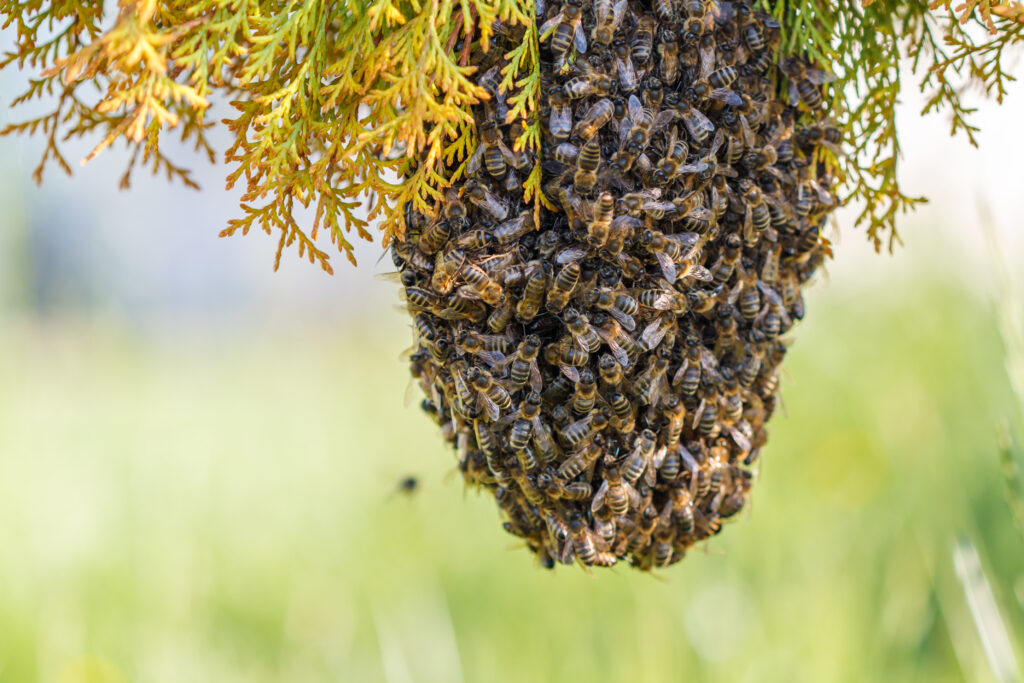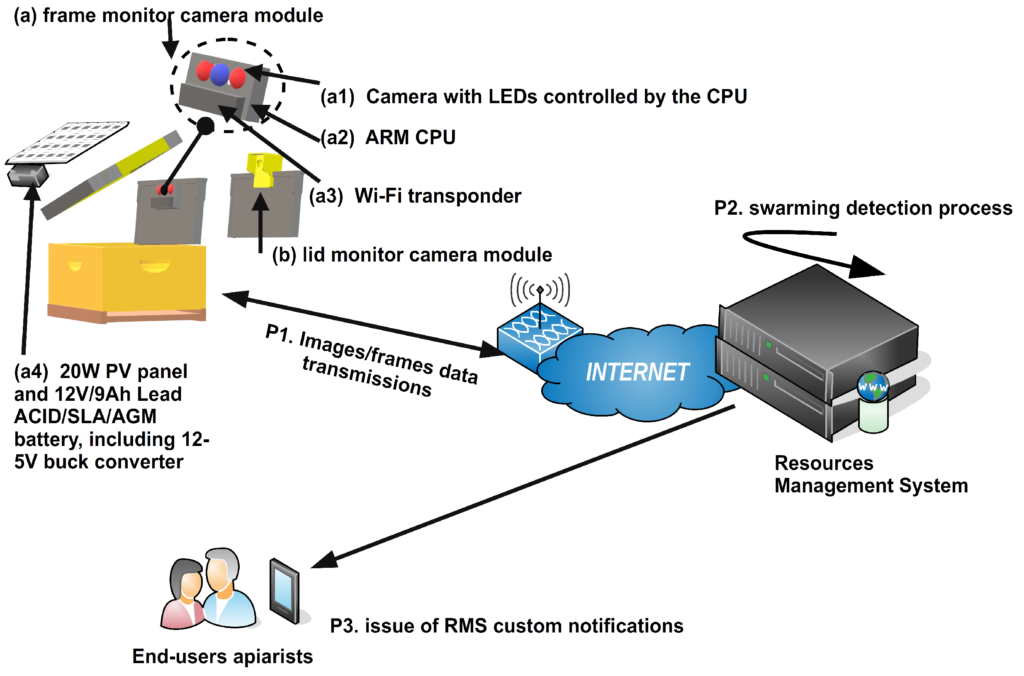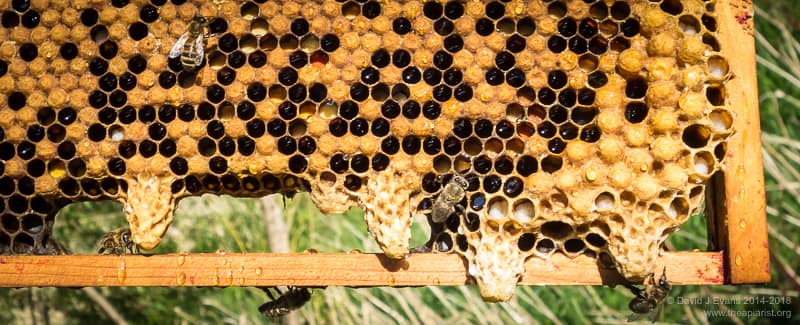
In the article “Swarm Alert: Proven Techniques to Control and Prevent Bee Swarms,” you will discover effective methods to manage and avert bee swarms. Bees are vital pollinators, but swarming can pose risks to both humans and the bees themselves. However, with the right techniques, you can ensure the safety of your property while protecting these essential creatures. Whether you’re an apiarist or a concerned homeowner, this article will provide you with valuable insights and practical tips to address and prevent bee swarms in a friendly and responsible manner.

Understanding Bee Swarming
What is a bee swarm?
A bee swarm is a natural phenomenon that occurs when a large group of bees leaves the original hive to search for a new place to build a colony. It is the way bees reproduce and create new colonies. When a hive becomes overcrowded, the bees will produce a new queen. Once the new queen is ready, the existing queen will leave with a portion of the worker bees, forming a swarm.
The reasons behind bee swarming
There are several reasons why bees swarm. The primary reason is overcrowding within the hive. When a hive becomes too crowded, it triggers the bees’ natural instinct to swarm and search for a new home. Other factors that can contribute to swarming include genetic predisposition, poor weather conditions, lack of resources, or even disturbances to the hive caused by predators or humans.
The risks and dangers of bee swarms
While bee swarms may seem intimidating, they are generally not dangerous if left undisturbed. However, if provoked or threatened, bees in a swarm can become defensive and may sting. Bee stings can be painful and cause an allergic reaction in some people. For individuals with severe allergies, bee stings can be life-threatening. It is essential to give bee swarms a wide berth and not disturb them to avoid potential risks.
Recognizing Bee Swarm Triggers
The impact of an overcrowded hive
An overcrowded hive is one of the primary triggers for bee swarming. When a hive becomes too populated, the bees will naturally begin preparing for swarming by producing a new queen. This overcrowding can result from several factors, including a healthy colony with a high population growth rate, a lack of available space for the bees to expand, or a failure to manage the colony effectively. Regular hive inspections can help identify overcrowding and prevent swarming.
Weather conditions that trigger swarming
Weather conditions play a crucial role in bee swarming. Warm and sunny weather is ideal for swarming as it allows the bees to venture out in search of a new home. Bees are less likely to swarm on rainy or extremely windy days. However, sudden changes in weather can also trigger swarming, as the bees may feel the need to leave the hive and find a safer location. Keeping an eye on the weather forecast can help beekeepers anticipate potential swarming events.
When to expect swarming seasons
Swarming seasons vary depending on the geographical location and climate. In general, swarming occurs during the spring and summer months when the bee population is at its peak. However, local factors such as temperature, availability of nectar, and hive conditions can influence the timing of swarming. Beekeepers should be particularly vigilant during these seasons and take preventive measures to control and capture swarms.
Preventing Bee Swarms
Importance of regular hive inspections
Regular hive inspections are vital for preventing bee swarms. By inspecting the hive regularly, beekeepers can monitor the population size, comb condition, and overall health of the colony. Identifying signs of overcrowding, such as the presence of swarm cells, can alert beekeepers to take action before swarming occurs. Inspections also provide an opportunity to identify and address other issues that may contribute to swarming, such as the presence of pests or diseases.
Providing enough space for the colony
One of the key factors in preventing swarming is ensuring that the hive has enough space for the bee colony to grow. Beekeepers should regularly assess the available space within the hive and provide additional room if necessary. This can be done by adding extra supers or honey chambers to accommodate the expanding population and provide adequate storage for honey.
Replacing old or damaged comb
Old or damaged comb can contribute to swarming as it may not provide sufficient space for the bees to expand their population. Over time, comb can become clogged with debris and hinder the bees’ ability to move and store honey. Regularly replacing old or damaged comb can help prevent swarming by providing the bees with a fresh and spacious environment to thrive in.
Managing honey production
Proper honey management is crucial in preventing swarming. Beekeepers should regularly monitor honey production and harvest excess honey if necessary. Leaving too much honey in the hive can lead to overcrowding and trigger swarming. By managing honey production and ensuring there is always sufficient space within the hive, beekeepers can help mitigate the risk of swarming.
Steps to Take During Bee Swarming
Locating the swarm
When a bee swarm occurs, the first step is to locate the swarm. Swarms can gather in various locations, including trees, buildings, or even in the open. Follow the flight path of the bees to find the cluster where they have settled. It is important to stay calm and maintain a safe distance from the swarm while observing their behavior.
Using a smoker to calm the bees
To safely handle a swarm, it is beneficial to use a smoker. The smoke released from the smoker helps calm the bees and makes them less defensive. Start by puffing a few gentle puffs of smoke towards the entrance of the swarm. Be careful not to use excessive smoke, as it can harm the bees.
Collecting the swarm safely
To collect the swarm, gently shake or brush the bees into a box or a specialized swarm-catching container. Care should be taken to avoid injuring the bees during this process. Slow and deliberate movements without sudden jerks or aggressive actions will help keep the bees calm.
Transporting the swarm to a new location
Once the swarm is safely collected, it should be promptly transported to a suitable location. Choose a location that is suitable for the bees to establish their new hive, such as an apiary or a designated bee yard. Ensure that the transportation container is properly secured and ventilated to provide a comfortable environment for the bees during the journey.
Integrating the swarm into a new hive
After transporting the swarm to its new location, the next step is to integrate the bees into a new hive. This involves carefully transferring the bees from the temporary container into a hive box or hive frames. It is essential to provide the bees with a stable and favorable environment by providing them with fresh comb, frames, and sufficient food supplies.

Utilizing Swarm Traps
The benefits of swarm traps
Swarm traps are an effective tool for beekeepers to capture and control swarms. These traps mimic the ideal nesting conditions that swarming bees are looking for. By attracting the swarm into the trap, beekeepers can easily collect and relocate the bees without causing harm or disturbance. Swarm traps can also help prevent swarms from establishing themselves in unwanted areas, such as residential properties.
Choosing the right trap design
When selecting a swarm trap, consider its design and features. An ideal trap should mimic a natural hive environment by providing a suitable entrance, ventilation, and sufficient space for the swarm to cluster. It should also be easy to access for inspection and bee removal. Many beekeeping supply stores offer a range of swarm trap designs to choose from, so beekeepers can select the one that best fits their needs and preferences.
Placement and maintenance of swarm traps
Proper placement and maintenance of swarm traps are critical for their effectiveness. Place the trap in a location that is likely to attract swarms, such as near established beehives or areas with an abundance of nectar sources. Regularly check and maintain the trap to ensure it remains in good condition and is ready to capture any swarms that may come along. Properly disposing of captured swarms is important to prevent the build-up of unwanted colonies in the area.
Creating a Bee-Friendly Environment
Planting bee-friendly flowers and plants
Creating a bee-friendly environment is essential for supporting bee populations and preventing swarming. Planting a variety of flowers and plants that provide rich sources of nectar and pollen throughout the year can help bees find ample food sources. Choose native plants whenever possible, as they are more likely to attract and benefit local bee populations. Avoid using pesticides and opt for organic and bee-safe gardening practices to ensure the health and well-being of the bees.
Providing a water source for bees
Bees require access to clean water for their daily activities, including cooling the hive and diluting honey for feeding. By providing a water source in the form of a shallow birdbath or small pond, beekeepers can contribute to the well-being of bees and prevent them from seeking water in neighboring properties. It is important to replenish the water regularly to maintain its cleanliness and to prevent mosquito breeding.
Avoiding the use of pesticides
Pesticides, particularly insecticides, can be harmful or even fatal to bees. It is crucial to avoid using pesticides, especially during times when bees are active, such as flowering seasons. If pest control is necessary, opt for natural and bee-safe alternatives or consult a professional beekeeper or pest control expert for advice on effective, bee-friendly methods.

Seeking Professional Help
When to call a beekeeper or pest control expert
In some situations, it may be necessary to seek professional help from a beekeeper or pest control expert. If a bee swarm poses a significant risk or is inaccessible, it is best to call an experienced beekeeper or pest control expert who can handle the situation safely and effectively. Similarly, if there are concerns about the presence of Africanized honey bees or aggressive bee behavior, professional assistance is highly recommended to ensure the safety of both humans and bees.
Choosing a professional bee removal service
When choosing a professional bee removal service, it is important to select a reputable and experienced provider. Look for beekeepers or pest control experts who specialize in humane bee removal and relocation. They should have the necessary skills and equipment to safely collect and relocate bee swarms without causing harm to the bees or the environment. Request references, check online reviews, and ask for proof of insurance before making a decision.
Dealing with Africanized Honey Bees
Understanding the characteristics of Africanized honey bees
Africanized honey bees, also known as “killer bees,” are a hybrid species that resulted from the interbreeding of African and European honey bees. They are known for their aggressive behavior and defensive nature. Africanized honey bee colonies can swarm and multiply rapidly, posing a higher risk to humans and animals in their vicinity. It is important to be able to recognize the characteristics of Africanized honey bees to take appropriate precautions and seek professional assistance when necessary.
Preventing Africanized honey bee swarms
Preventing Africanized honey bee swarms requires similar strategies to preventing swarms of other honey bee species. Regular hive inspections, providing adequate space, and managing honey production are essential. However, due to the aggressive nature of Africanized honey bees, it is particularly important to be cautious and seek professional help if encountering Africanized honey bees or suspecting their presence. Professional beekeepers experienced in handling Africanized honey bees can employ specialized techniques to safely manage and relocate these colonies.

Educating the Community
Teaching children about bee safety
Educating children about bee safety is crucial for their protection and to foster a positive relationship with bees. Teaching children to stay calm and still if approached by bees and to avoid swatting or running away can help prevent potential stings. Informing children about the importance of bees in pollination and the environment can also encourage them to develop empathy and respect for these beneficial insects.
Promoting bee conservation
Promoting bee conservation within the community is essential for the well-being of bees and the environment as a whole. Encouraging practices such as planting bee-friendly gardens, avoiding pesticide use, and supporting local beekeepers can make a significant difference in ensuring the survival of bee populations. Organizing educational workshops, awareness campaigns, or community events centered around bees and their importance can also help spread the message of bee conservation.
Conclusion
Understanding bee swarming is crucial for beekeepers and anyone living in areas with bee populations. By recognizing the triggers for swarming, taking preventive measures, and employing proper techniques during swarming events, beekeepers can effectively control and manage swarming colonies. Creating a bee-friendly environment, seeking professional help when necessary, and educating the community about bee safety and conservation further contribute to the well-being of bees and the sustainability of their populations. With the right knowledge and practices, we can coexist harmoniously with bees and appreciate the vital role they play in our ecosystem.
